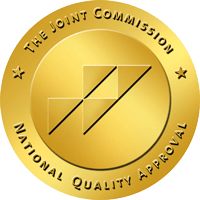Addiction treatment requires more than one type of therapy. No two cases of addiction are exactly the same, so different types and combinations of therapy must be used. One of the most common and most effective therapies is cognitive behavioral therapy. All high-quality addiction treatment centers like Pillars Recovery in Southern California use a cognitive behavioral therapy program.
What Is Cognitive Behavioral Therapy?
 Even though a cognitive behavioral therapy program is commonly used in treating addiction, it wasn’t originally invented for that purpose. Psychologist Aaron Beck used cognitive behavioral therapy in the 19060s to treat depression and anxiety in his clients. Eventually, experts in the field discovered that mental health issues like depression and anxiety often lead to addiction.
Even though a cognitive behavioral therapy program is commonly used in treating addiction, it wasn’t originally invented for that purpose. Psychologist Aaron Beck used cognitive behavioral therapy in the 19060s to treat depression and anxiety in his clients. Eventually, experts in the field discovered that mental health issues like depression and anxiety often lead to addiction.
The negative thoughts that contribute to depression and anxiety tend to also be the root of addiction. Essentially, CBT is a kind of talk therapy that usually goes with a psychotherapy treatment program. Licensed therapists perform CBT by talking to their clients during a treatment session. The goal is to find negative and wrong thinking patterns and to replace them with positive thoughts and patterns. It also helps therapists uncover underlying issues and mental health or mood disorders.
Experts generally agree that addiction functions as a brain disease. Like any disease, it also causes physical symptoms. Although it’s considered chronic and incurable, it does respond positively to the right treatment. Remission is possible in the long term.
Why Does Cognitive Behavioral Therapy Work So Well?
Abusing drugs or alcohol functions as an unhealthy behavioral pattern. However, most people who abuse drugs or alcohol do not have an awareness of the pattern that leads them there. They don’t understand why they can’t simply stop using whenever they want.
A cognitive behavioral therapy program allows clients to see patterns in their thoughts and behaviors. From there, they can begin to recognize the negative aspects that need change. Therapists don’t outright tell clients what to change or what they think constitutes a negative behavior. Instead, clients learn to see the thoughts and behaviors themselves and consider making changes.
It’s essential that clients have the motivation to make changes they can be comfortable with. This intuitive approach is mainly why CBT works so well in treating addiction. It allows clients to focus on problems that they identify themselves. Finding the problems or triggers then allows them to avoid situations and groups that enable addictive behaviors.
How Cognitive Behavioral Therapy Treats Addiction
Cognitive behavioral therapy programs treat addiction by helping clients understand why they reach for drugs or alcohol to feel better. The base of CBT is called the cognitive triangle, and it reveals that feelings, thoughts, and behaviors influence each other, but not always in the same direction. Therapists use this triangle to help clients do the following:
- Recognize negative behaviors
- Avoid triggers that cause said behaviors
- Cope with negative thoughts and feelings without using a substance
At Pillars Recovery in Orange County, California, we build a sustainable recovery for clients through cognitive behavioral therapy and a range of other treatments. Two locations in Laguna Beach and Newport Beach serve women and men separately at their respective centers. Some of our high-quality addiction treatment programs include:
At last, stop addiction from ruling your life. Find freedom from drug or alcohol addiction through a quality drug rehab like Pillars Recovery. Give us a call at 866-782-0247 today to discover more about cognitive behavioral therapy and other treatments to beat addiction.
